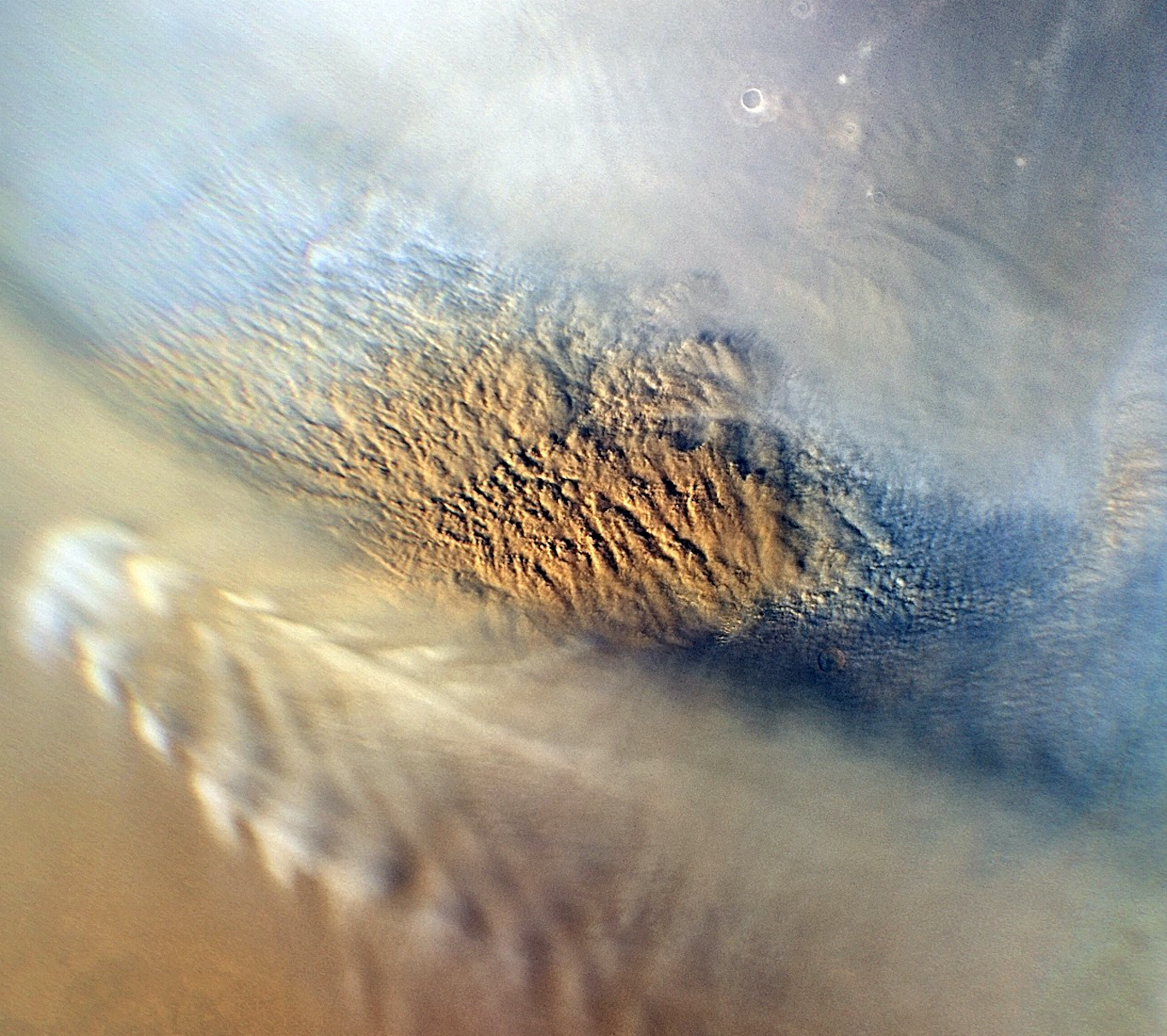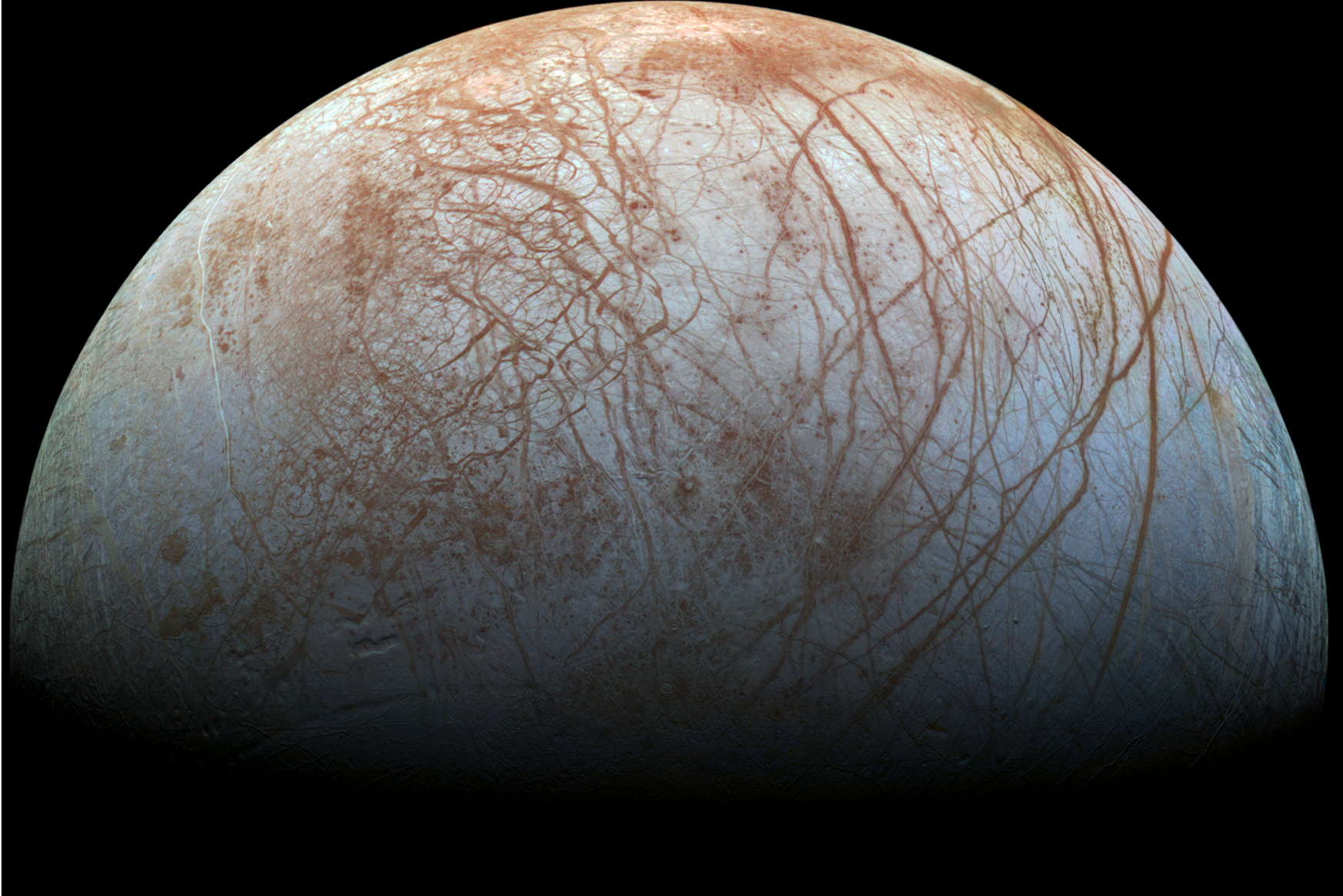Dust-related electrochemistry can reshape Martian surface materials with physical and chemical changes observable after only hundreds of years. Similar electrical effects may be instrumental on Venus and Europa.
Thinking like Earthlings may have caused scientists to overlook the electrochemical effects of Martian dust storms. On Earth, dust particles are viewed mainly in terms of their physical effects, like erosion. But, in exotic locales from Mars to Venus to Jupiter’s icy moon Europa, electrical effects can affect the chemical composition of a planetary body’s surface and atmosphere in a relatively short time.

A new paper from Alian Wang, research professor of Earth and planetary sciences, reports the third in a series of studies on the electrochemical effects of Martian dust activity. This latest work focuses on amorphous sulfur and chlorine salts found by the Curiosity rover at Gale crater on Mars. The chemical signature of these materials could have been induced by electrochemical processes during Martian dust activities in a relatively short geologic time frame of years to hundreds of years. The paper was published Nov 17 in the Journal of Geophysical Research: Planets. A summary from AGU's editors highlighting the work has since been published in Eos.
“This direction of scientific investigation has been largely overlooked in the past,” Wang said. “Researchers are used to thinking ‘inside the box’ based on terrestrial experience.” Here on Earth, the effects of events like dust storms and dust devils are mostly defined by the physical impact of particles, she explained. The electrical effects are much less apparent on Earth because, in most cases, the atmospheric pressure prevents the occurrence of low-strength electrostatic discharge.
On Mars, however, the atmospheric pressure is less than 1% of that on Earth. This key difference enables electrostatic discharge (ESD) to begin occurring at low levels of charge accumulation, about 1% of that on Earth.
When ESD occurs, it causes electrochemical reactions that transform materials on the Martian surface, Wang explained, causing loss of crystallinity, removal of structural water, and oxidation of certain elements like sulfur, chlorine, and iron. During the planet’s long Amazonian period, which spanned 3 billion years, dust activity was frequent, and those transformations accumulated on the Martian surface.
“The collective chemical effect of electrostatic discharge can be significant,” Wang said. “This is the core idea of our new study.”

Previous studies from Wang and her team focused on the incredible oxidative power of ESD-generated energetic electrons, which they found to be ten million times greater when scaled to relevant conditions on Mars, compared with ultraviolet (UV) photons. In addition, they showed that Martian dust activity could be a major driving force in the chlorine cycle on present-day Mars. In this latest report, Wang’s team concluded that ESD-driven phase changes would be observable on Mars after only hundreds of years, a relatively short timeframe by geologic standards.
So, what’s next?
“‘Explore the subsurface’ is the suggestion that we would give to the next phase of Mars exploration missions, including NASA’s Perseverance rover, CNSA’s Tianwen-1 lander and rover, and ESA’s ExoMars lander and rover,” said Bradley Jolliff, a co-author on the paper and Scott Rudolph Professor of Earth and Planetary Sciences. “These missions are all seeking evidence for geological and hydrological evolution at their selected landing sites, and they are especially looking for and hoping to collect samples that contain traces of past biological activity. Exploring the subsurface would enable sampling of ancient materials – some of which might still be safekeeping precious biomarkers.”
Looking beyond Mars, these previously understudied electrostatic phenomena might have implications for surface conditions on Europa and in Venus’s atmosphere as well. Wang noted that lightning in Venus’s famously dense and chemically complex atmosphere is an unresolved mystery. Quincy Qu, a graduate student working with Wang, is currently studying the potential chemical effects of Venusian lightning. Wang and Alex Bradley, associate professor of Earth and planetary sciences, are working on a NASA-supported project examining the survival of biomarkers under energetic electrons on the Jovian moon Europa, another place in the solar system that might host life in its ocean.
“To unveil the potential chemical effects of energetic electrons in relevant planetary environments is the overarching theme of the projects carried out by my team,” Wang said. “We are excited by this new direction of scientific investigation, by our new discoveries, and we’re looking forward for more to come.”






